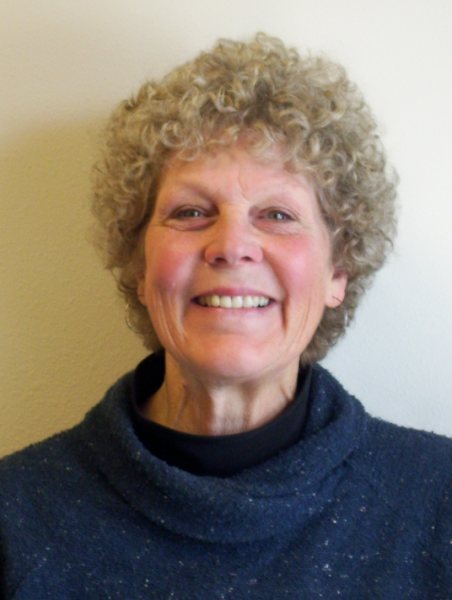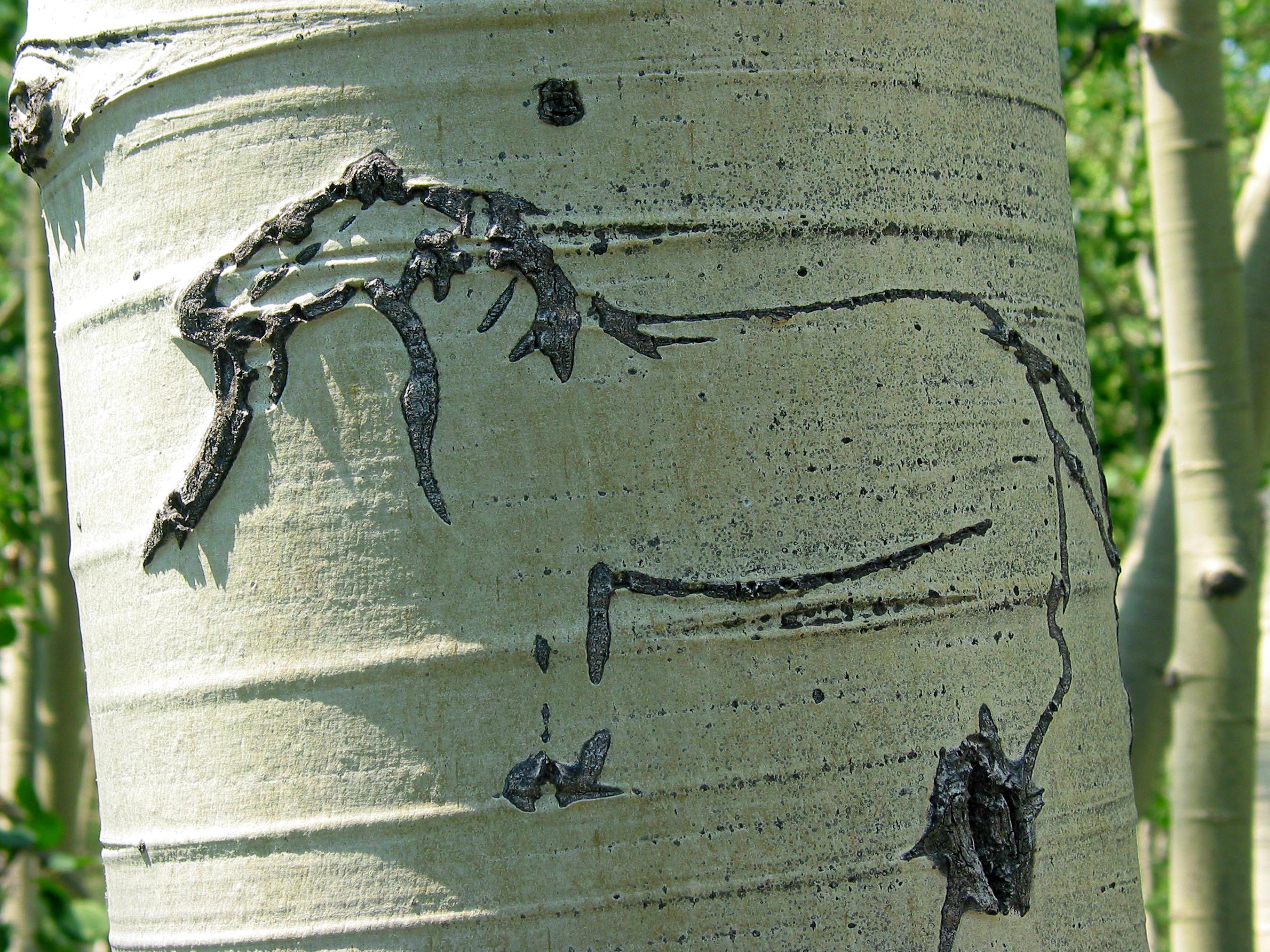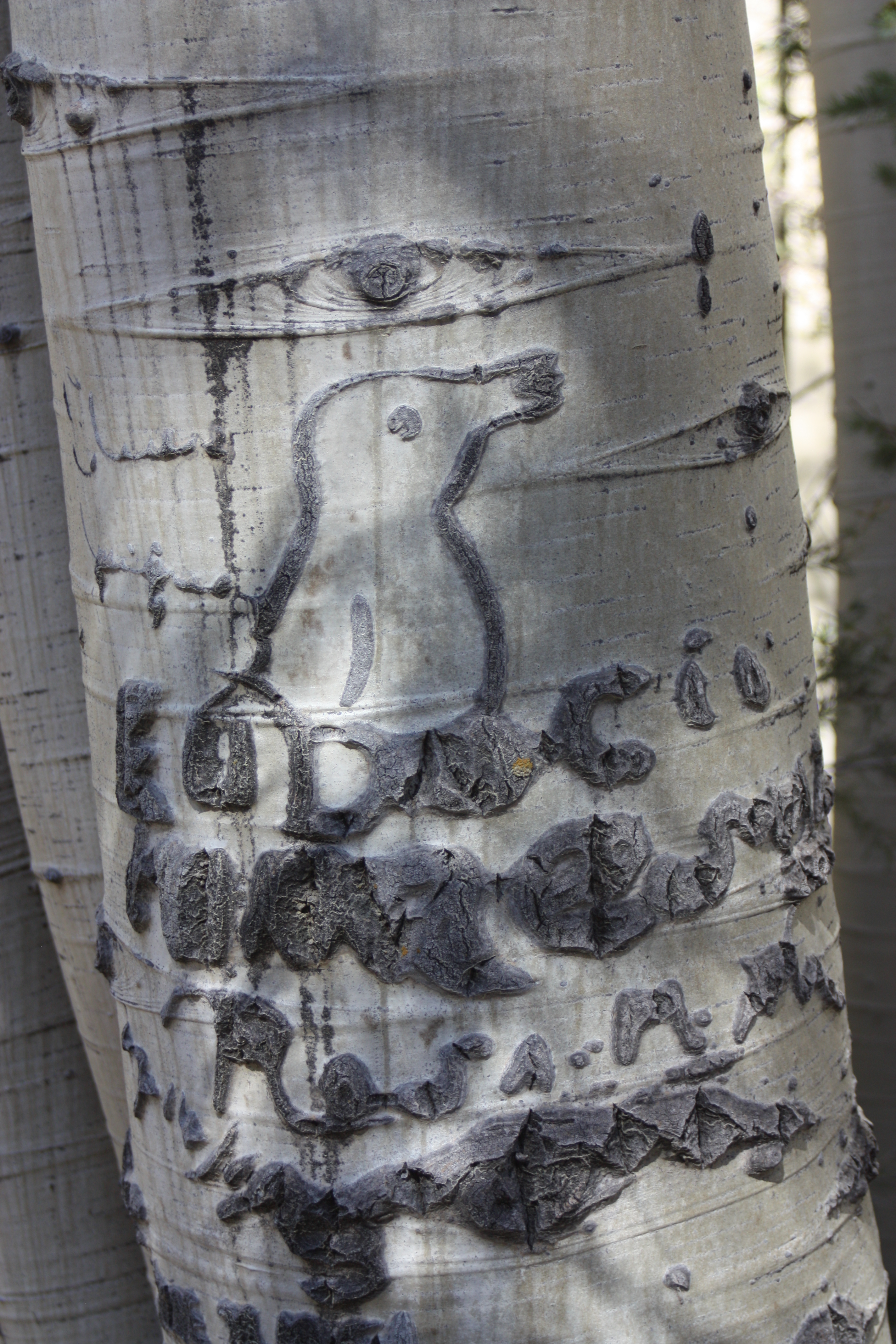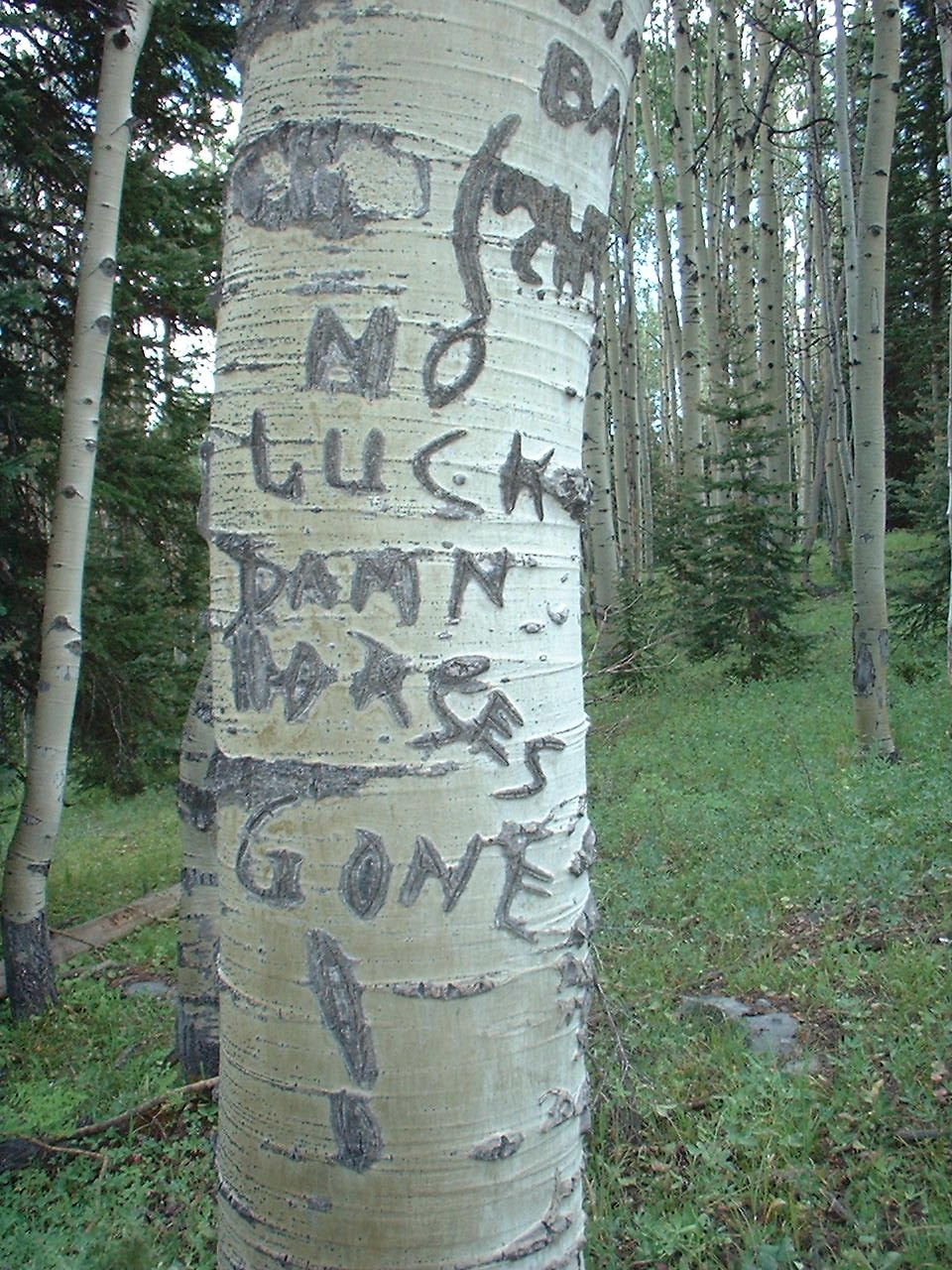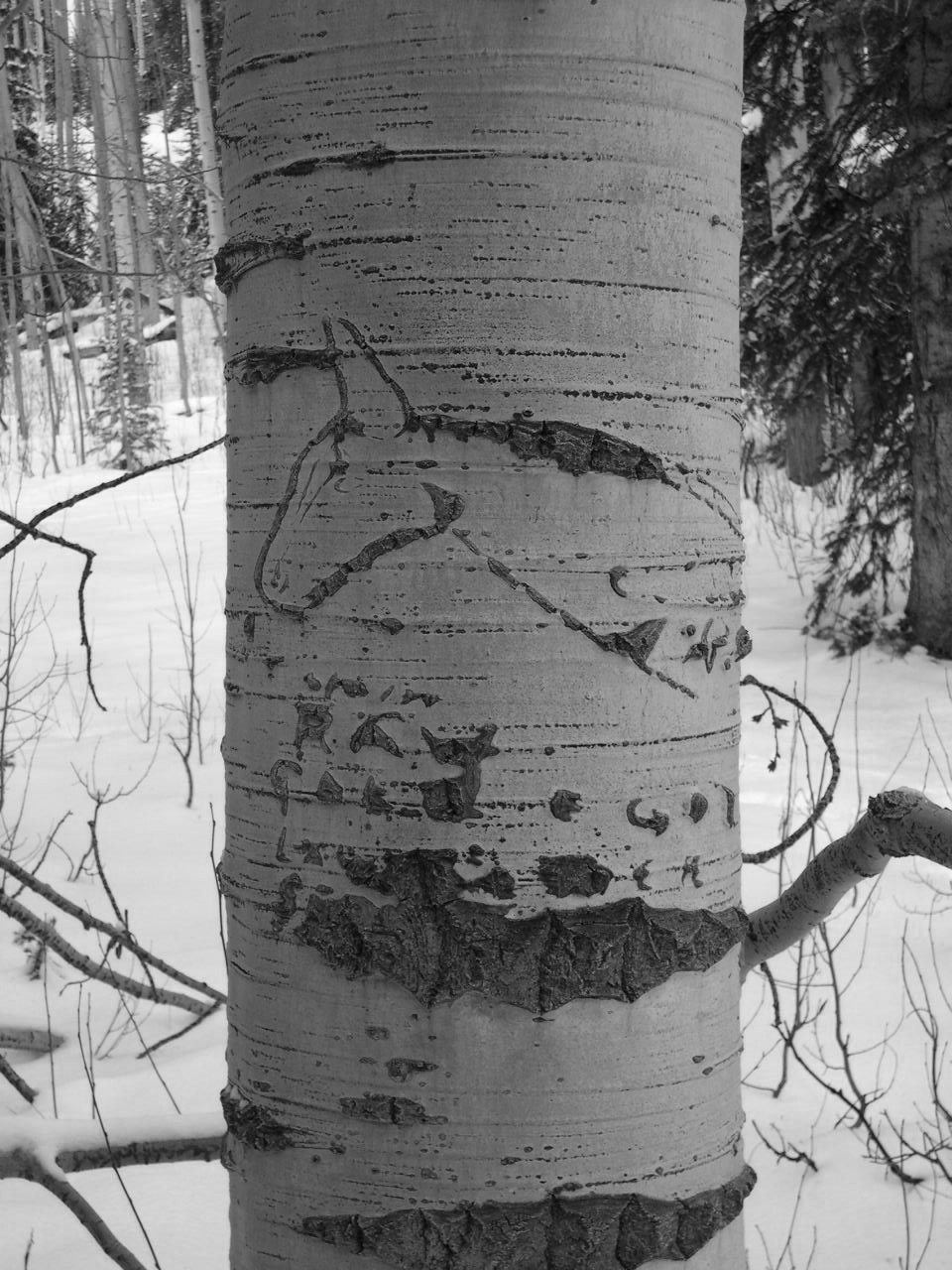Story
The Wooden Canvas
Arborglyphs Reflect Hispano Life Along the Pine-Piedra Stock Driveway
A quiet walk among the aspens reveals a history that is often forgotten. Stately white trees with green or gold leaves, depending on the season, stand as sentinels of a past time. On their skin, incised with care, are elaborate carvings that give names, places and images—a record of travelers through the forest. These are arborglyphs: tree carvings that provide a glimpse of past lifeways. They are a wooden canvas, a reflection of Hispano history. They are ever-changing as the trees grow and expand.
Too soon, they will be gone. Wind, fire, disease or age will claim these trees. As they fall, their messages will decay and this window into the past will close. The names will be forgotten, and the art of the wayfarer will be lost.
The loss of these fragile inscriptions and images prompted the San Juan Mountains Association (SJMA) to apply for funding from the History Colorado State Historical Fund to document the arborglyphs along the historic Pine-Piedra Stock Driveway in southwestern Colorado. In the early 2000s the SJMA received a grant and with help from volunteers and professional archaeologists photographed almost a thousand carvings. These efforts provided a record of the images, some no longer in existence. In 2013 the SJMA received a second grant to gather more information about the images and their historical context. This work is ongoing and includes archaeological field documentation of two camp areas along the driveway where concentrations of arborglyphs were previously located, historical research into the Hispano settlement of the area, and, this fall, oral histories with carvers and/or their descendants and other herding families. The project results are available to the public in two museum exhibits, a photo exhibit and a project book.
Our research indicates that arborglyphs are an archaeological artifact of the herding camps and activities, as well as a long tradition of Hispano herding. Churro sheep were first introduced from Spain during the 1540 entrada of Coronado to sustain his expedition members. The sturdy sheep were well adapted to the arid climate and terrain of New Spain and the northern frontier of the present-day American Southwest. Over time the isolated frontier settlements utilized sheep for their meat and their fleece to sustain households. The lack of a cash economy also resulted in sheep as units of exchange for pioneer needs. The traditional Spanish partido system, where herders worked for livestock shares, helped increase the number of flocks for young and poor herders.
Spanish, and later Mexican, land grants encouraged the northward expansion of settlement into present-day northern New Mexico and Colorado. Following the establishment of the Tierra Amarilla Land Grant of 1832 and into the mid-1800s, populations expanded into the San Juan Basin and the Pagosa Springs area. During the early and mid-1800s, there was an important shift in the sheep industry from an emphasis on meat to the demand for wool for clothing and household goods. As a result, fewer sheep were butchered, and the size of flocks increased to accommodate the demand for fleece. In addition, the old traditions of transhumance, or seasonal migration for forage, became standard practice. Forage in low winter pastures was very limited in the arid summers, and travel to high summer pastures was necessary to sustain the bands of sheep. The cool summers had the added benefit of stimulating the production of a heavier fleece on the spring-shorn sheep.
The burgeoning sheep industry was not lost on the cattlemen of the region. Cattle feed on grasses, and they graze at lower elevations than sheep. Competition for forage and grazing areas developed, and it resulted in serious conflicts between sheep and cattle interests. Cattle owners tended to be Anglo ranchers, and the sheep owners and herders tended to be Hispanos, partially a function of economic wherewithal. Conflicts escalated into shootings, hangings, political disputes and murder. Many of the disputes were racially based and fanned by inflammatory language.
To reduce conflicts and better manage the public land, the newly created San Juan National Forest designated driveways to channel sheep through cattle-grazing areas into high summer pastures. One of these “U.S. Sheep Driveways” was the Pine-Piedra Driveway. According to permit regulations, the driveway use was limited to specific times. In addition, the herders were limited to the number of camps along the route and the size of the flock. In the mid-1900s, when cattle and sheep began using the driveway, it became known as the Pine-Piedra Stock Driveway.
The arborglyphs along the driveway are primarily Hispano with some cattle brands present. The carvings include the individual herder’s name and hometown and the date of the carving, human and animal images and sometimes messages. Contrary to popular belief, erotic images account for only about 5 percent of all carvings. Most of the herders were from nearby settlements and towns, primarily Hispano settlements along the San Juan River. The carving dates cluster in July (during travels up the driveway) and September (during returns to lower pastures).
The San Juan Mountains Association is very appreciative of the opportunity to continue its early work on the Hispano arborglyphs and the historical context. We believe that as we learn about these traditions and their contributions to our regional history, appreciation will grow. References to ethnic diversity in the Southwest are common. Through public education, we hope that this project will help bring greater awareness of Hispano traditions that are close to home.

